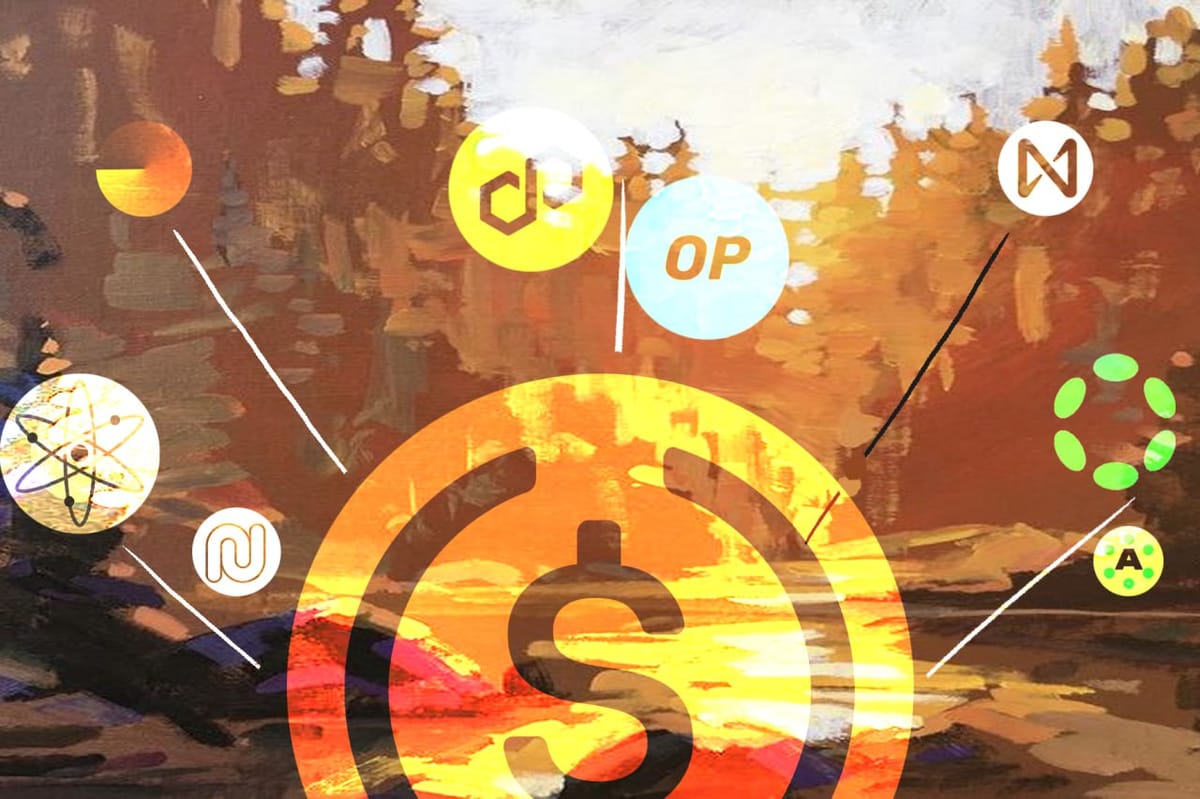
FinTech firm Circle concludes its "Stable September": a push to extend its popular USDC stablecoin to several blockchains including Coinbase's recently launched BASE, Polkadot, Cosmos's appchain Noble, Optimism, Polygon and the NEAR Protocol.
Polkadot
As detailed in its blog, Circle connected to Polkadot ecosystem through it Asset Hub parachain.
By leveraging Asset Hub, USDC transactions can settle quickly with fees as low as a fraction of a penny. This provides developers building on Polkadot with a highly efficient and usable stablecoin platform.
Cosmos
USDC issued by Circle will be native to Cosmos via Noble, an appchain purpose-built for native asset issuance in Cosmos. Noble USDC can be considered the official form of USDC for the Cosmos ecosystem. Over time, native USDC liquidity will proliferate via secure Inter-Blockchain Communication (IBC) connections to dozens of sovereign Cosmos appchains, including dYdX and Osmosis.
Bringing native USDC to Cosmos via Noble enables builders and users to benefit from a fully reserved, dollar-backed stablecoin that is always redeemable 1:1 for US dollars, along with institutional on-and-off ramps, something that the ecosystem was previously missing.
Ethereum Ecosystem
In September, USDC was also deployed on Ethereum's optimistic rollup-based scalability solution, Optimism, and started the migration from bridged form to a native token on Ethereum sidechain Polygon.
Other blockchains
In addition to joining Polkadot's Asset Hub and Cosmos's Noble, and strengthening its foothold on Ethereum scaling chains, Circle also made some interesting choices regarding rollouts on other protocols. For example, USDC joined NEAR Protocol, an Ethereum competitor blockchain that wound down its own stablecoin last year.
Perhaps less surprisingly, Stable September also featured a native launch of USDC on Coinbase's new BASE blockchain.
Where is USDC Heading?
With over $25 billion in circulation, USDC is the second-largest stablecoin and one of the fastest-growing cryptocurrencies overall. It is issued by Circle, a company with a stake in the Coinbase crypto exchange. The USDC token is allegedly 100% backed by US Dollars held in reserve, making it a fully reserved digital dollar. Past controversies have proved that this claim has not always been true, but USDC now has transparency and regular attestations to prove its full dollar backing.
In April, Circle launched its own blockchain bridge – the Cross-Chain Transfer Protocol (CCTP), to allow faster, safer, and cheaper transfers of USDC between different blockchains. The company believes it will help consolidate USDC's market cap which is currently fragmented across multiple blockchains by allowing tokens to move from ecosystem to ecosystem instead.
Currently, CCTP supports Ethereum (ETH), Avalanche (AVAX) and Arbitrum (ARB), but Circle plans to add more blockchain connections this year.
Having a significant market share, a strong penetration into DeFi and a regulated stance, as well as interoperability tools like CCTP, Circle has a strong bet on building the much-needed connection between different blockchain ecosystems.
